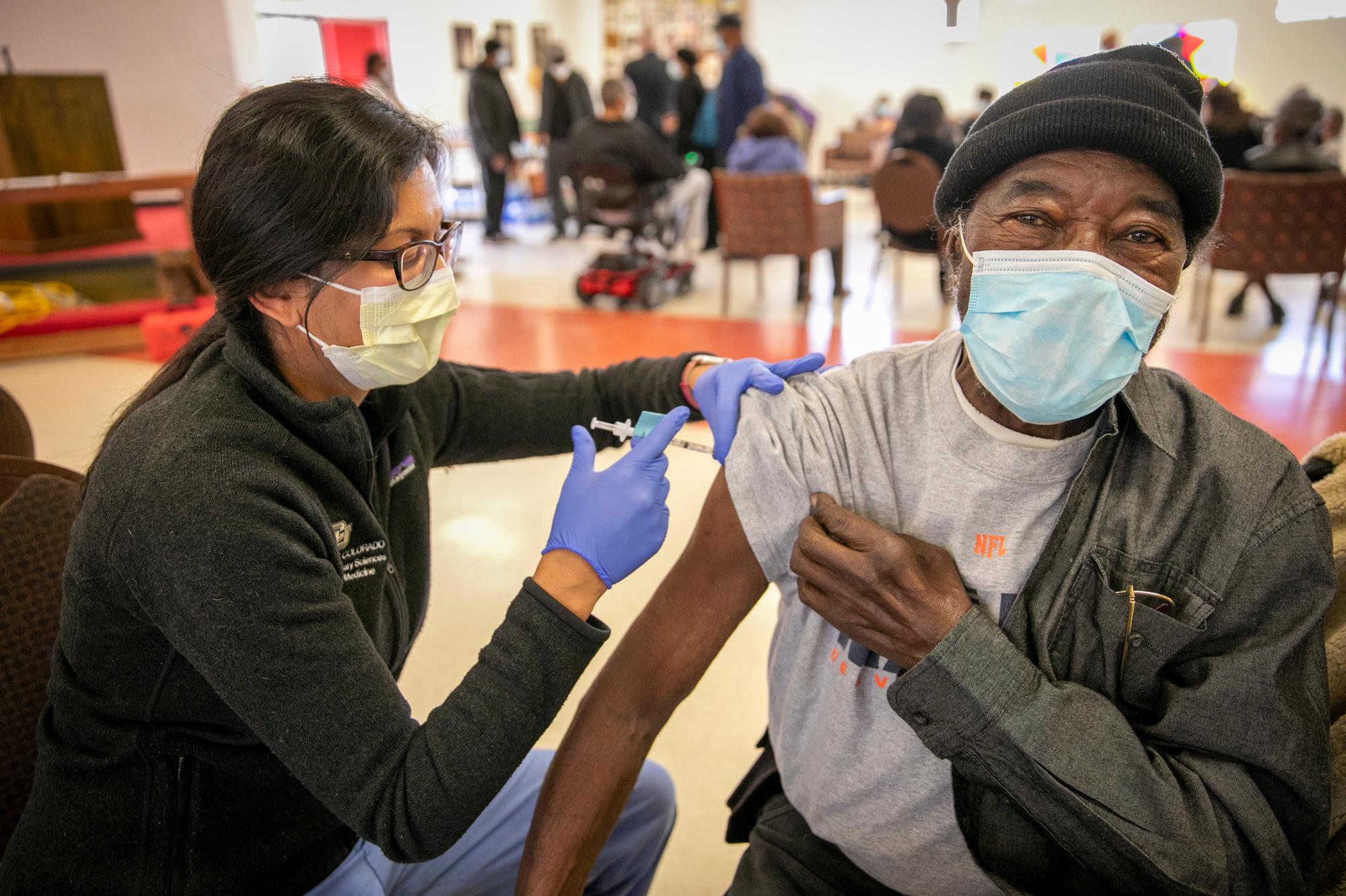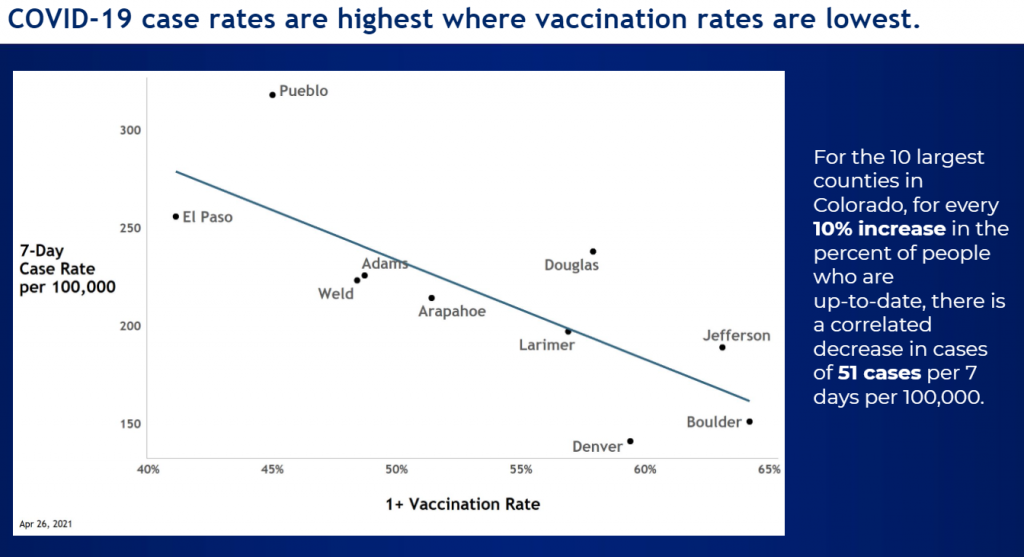
Vaccinations are limiting the spread of the coronavirus in the Colorado communities where they are being most accepted.
Dr. Rachel Herlihy, the state’s epidemiologist, compared vaccination rates in the state's 10 largest counties with COVID-19 case rates. At a Tuesday COVID-19 update, she said case rates are highest in locations where vaccination rates are lowest and vice versa.
"What we're really seeing here is our first clear sign, our first promising indication, that we're seeing community-level protection from vaccination," Herlihy said.
Boulder, Jefferson and Denver counties are seeing decreases in case rates that Herlihy attributed to people getting their vaccine shots. On the other end of the scale are El Paso and Pueblo counties, where case rates are higher and vaccination rates are lower.
“So we're seeing our communities protected through levels of vaccination that are higher,” Herlihy said. “We're seeing that impact really on case rates occurring from county to county.”

In the middle of the chart are other Front Range counties, with Douglas and Larimer counties closer to higher vaccination rates and lower case rates. Adams and Weld counties are closer to Pueblo and El Paso counties on the chart and Arapahoe County is right in the middle.
For the 10 largest counties in the state, for every 10 percent increase in the percent of people who are up-to-date on their vaccination shots, Herlihy said there’s a correlated decrease in cases of 51 cases per week per 100,000 people.
As counties hit herd immunity, we might see the pandemic end 'at different times in different communities.'
The governor said he expects eventually some counties will see community transmission drop off sharply when they hit herd immunity. Conversely, those with lower vaccination rates will keep seeing the spread of the virus until they reach herd immunity.
“I think what it shows is the pandemic will end at different times in different communities. To be clear, it hasn't ended anywhere yet. But by these numbers, some communities will reach herd immunity levels before other communities,” he said.
Polis pointed to the chart and noted Boulder and Jefferson counties are nearing 65 percent vaccination of their residents, and as a result, there’s now a “decreased circulation of the virus in those communities.”
But he said Pueblo and El Paso counties have significantly lower vaccination rates.
“That's why I was in El Paso and Pueblo last week, trying to drum up interest in getting vaccinated,” Polis said. “There's no place in the state that it's easier to get vaccinated than Pueblo, Colorado.”
The governor stressed that large counties with relatively high numbers still need to vaccinate more people.
“It is not yet herd immunity, right? We need to be somewhere closer to that 70 to 80 percent range,” Polis said.
He said once the rates reach in the 75-to-80 percent range “there's just not enough hosts to effectively spread the virus,” the spread of the virus will slow considerably, and “the cases will go down.”
“We need to get to that level where the virus simply no longer has enough hosts to spread effectively,” Polis said.
At the same time, hospitalizations are at their highest levels in months and COVID cases rates are increasing among children and teens.
The trend is good news while other virus indicators are proving more troublesome.
The one-day positivity rate is now 9.65 percent, the highest level in months. And hospitalizations recently popped above 600, also their highest levels since January.
Polis stuck to the message he’s been sharing for weeks: you want to see the end of the pandemic, get your shots now.
“If you haven't yet been vaccinated, you are at very high risk for contracting this virus right now. It's very important if you're not yet fully vaccinated, avoid social interactions where you’re around others. If you are, you can certainly breathe easier,” he said.
Herlihy says the higher hospitalization numbers are likely being driven by the more contagious U.K. variant, which is now the dominant strain in Colorado. With more older people getting vaccinated, she said, case rates are increasing rapidly in children, especially in middle and high school students.
Children from newborns to age 19 made up 13.49 percent of the state’s confirmed cases in late November, for a total in that age group of 4,333 cases. They were 26.43 percent of all cases, or 2,953 cases, in the week of April 18.
Polis said families now have a new option to get the vaccine for their children older than 16. Children’s Hospital Colorado will now be offering free shots of the Pfizer vaccine at its various sites. He said he was hopeful the vaccine will be approved for 12-to-15-year-olds in time for the new school year in the fall.
The governor also announced all six of Colorado’s large community vaccination sites will now accept walk-ins without appointments.
“If you don't set one up or just don't feel like using the internet, or you're just driving by, and you're like, ‘I have 15 minutes,’ don't worry about not having an appointment,” Polis said. “You can get vaccinated and you'll be done in 20 minutes.”








